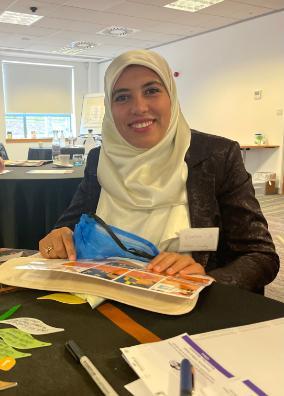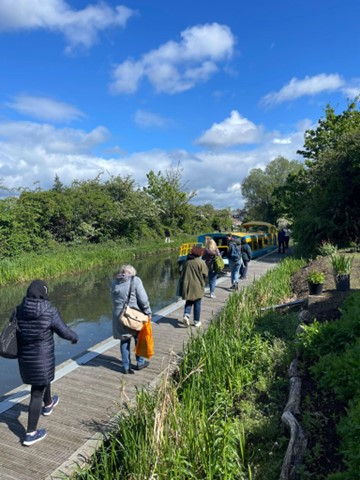Enhancing ESOL Learning Through Creative Approaches and Outdoor Activities
Published: 4 April 2024
English for Speakers of Other Languages (ESOL) programs traditionally take place within classroom settings, but innovative educators are exploring alternative methods to enhance language acquisition. One such approach gaining traction is teaching English through outdoor activities and creative endeavours. This blog delves into the pedagogic benefits of venturing beyond the confines of the classroom.
By Sawsan Abdelghany

English for Speakers of Other Languages (ESOL) programs traditionally take place within classroom settings, but innovative educators are exploring alternative methods to enhance language acquisition. One such approach gaining traction is teaching English through outdoor activities and creative endeavours. This blog delves into the pedagogic benefits of venturing beyond the confines of the classroom, drawing from observations in ESOL classes across Scotland and insights from interviews with refugees and asylum seekers.
Beyond Classroom Walls: An Introduction to Outdoor Learning
Incorporating outdoor activities into ESOL programs offers a refreshing departure from conventional teaching methods. Whether through dedicated courses in gardening, sewing, or cooking, learners engage in practical tasks while simultaneously expanding their English vocabulary. These endeavours provide valuable opportunities for language practice in authentic, real-world contexts.
During my research for my MPhil dissertation[1], I engaged in participant observation by attending various language classes designed for asylum seekers and refugees. from ESOL classes reveal the profound impact of outdoor learning on language acquisition, particularly among individuals with low literacy levels or limited exposure to formal education. For instance, an IT class conducted online for Arabic-speaking beginners seamlessly integrated English vocabulary with basic computer skills. The instructor adeptly transitioned between Arabic and English, fostering a supportive learning environment conducive to language acquisition.
The Role of Community Engagement
English cafes exemplify the intersection of language learning and community integration. These informal gatherings facilitate language practice in a relaxed setting, with participants from diverse backgrounds exchanging cultural insights over shared meals. The inclusion of local Scottish residents not only fosters language acquisition but also promotes cross-cultural understanding and social cohesion.
Initiatives like sewing groups for refugees and community-led gardening and yoga classes offer platforms for English language practice while cultivating practical skills. These aims not only enhance language proficiency but also contribute to participants' overall well-being and sense of belonging within their new communities.
Family-Friendly Learning Environments
Recognizing the caregiving responsibilities of many ESOL learners, programs that accommodate children and babies create inclusive and accessible learning environments. By removing barriers to participation, such initiatives empower parents to pursue educational opportunities while nurturing a supportive community atmosphere.
The "Sharing Lives, Sharing Languages" project exemplifies the potential of outdoor learning to foster social inclusion and cultural exchange. Participants attest to the transformative impact of outdoor excursions on language acquisition, citing increased confidence and a sense of belonging.
Conclusion: Embracing Diversity, Empowering Learners
In conclusion, embracing creative approaches and outdoor learning strategies enriches ESOL programs, empowering learners to navigate linguistic and cultural transitions with confidence. By venturing beyond the classroom, educators foster inclusive learning environments that celebrate diversity and promote meaningful community engagement. As we continue to innovate in language education, the journey toward proficiency extends far beyond traditional learning spaces, encompassing the vibrant tapestry of experiences that shape our daily lives.
[1] This work can be read in my MPhil thesis, available at https://theses.gla.ac.uk/83805/

First published: 4 April 2024

